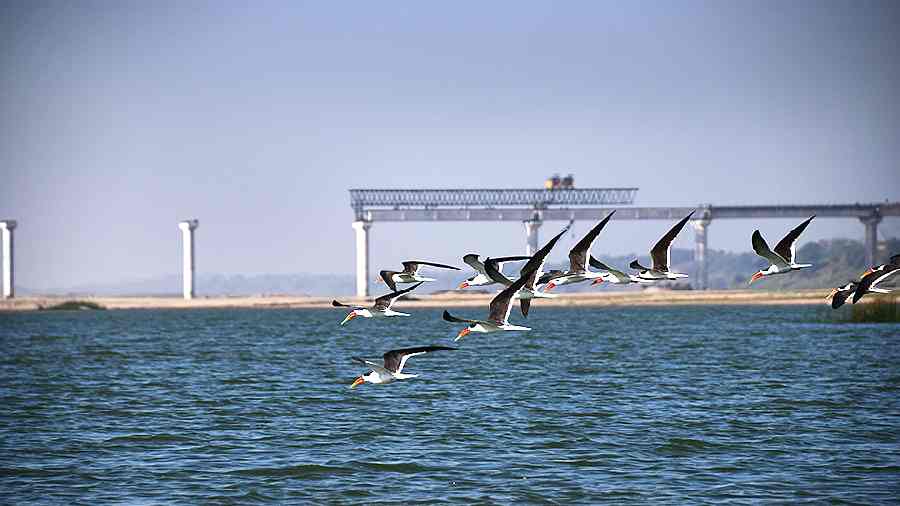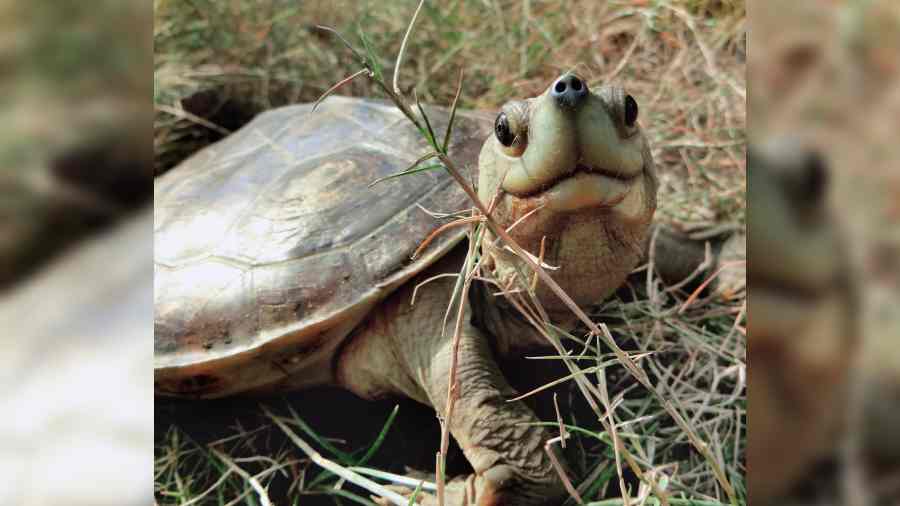India’s longest river is also an animal kingdom.
A section of residents of the southernmost tip of Bengal, whose lives and livelihood are inseparable from the river, were sensitised on its many inhabitants during a workshop over the past three days. A three-day capacity-building workshop on the biodiversity of the Ganga river basin, held at the Sajnekhali camp of the Sunderbans Tiger Reserve, concluded on Thursday.
Scientists from the Wildlife Institute of India, an autonomous institute under the Union ministry of environment, forest and climate change, helmed the workshop. In the audience were dozens of residents of the area, who work mainly as “eco-tourism guides”.
The Ganga, which originates in the Himalayas at Gomukh, the terminus of the Gangotri glacier, meets the Bay of Bengal at Gangasagar, over 100km from Calcutta. The river, spanning 2525km, binds five states along its main stem and 11 in her entire basin, home to over 600 million people.
From Indian skimmers to Gangetic dolphins, the Ganga is home to a diverse group of species. Some live in the river, some in wetlands around it and some others frequent it for food. But many of them are vulnerable because of the rapid degradation of the river because of human activities.
“From Gangotri to Gangasagar, the Ganga is home to a rich variety of animals and birds. We are involving stakeholders — the state forest departments, local administrations and local population — to take part in the conservation of this ecosystem,” said Deepika Dogra, a project associate with WII.
“It was a two-way interaction and learning process. Often, we found that the locals are already familiar with some of the species. They already have practical knowledge of the animal’s behaviour in the Sunderbans. But their idea is limited to a specific geographic location. We told them that the mangroves were part of a much larger ecosystem,” Doga said.
In Bengal alone, the Ganga has different types of crocodiles, dolphins and multiple varieties of turtles and birds.
The medium-sized and broad-snouted marsh or mugger crocodiles (Crocodylus palustris) are found in freshwater. But since the Farakka barrage came up, their sightings downstream Hooghly have gone substantially down.
The Gangetic dolphin (Platanista gangetica), the national aquatic mammal of India, is another important freshwater inhabitant of the Ganga. The largest and heaviest living reptile in the world, the saltwater crocodile (Crocodylus porosus), is found in the brackish waters of the Sunderbans.

Indian skimmers. Picture courtesy: WII
The Sunderbans is also home to the elusive Irrawaddy Dolphin (Orcaella brevirostris) and the northern river terrapins (Batagur Baska), apart from around 200 recorded bird species.
Plastic waste, sophisticated fishing nets and other human activities pose an existential threat to these animals. In the Sunderbans, a bulk of the plastic discarded into the water can be attributed to tourism activities. The workshop is part of an initiative called Jalaj that aims to create sustainable livelihoods for people living along the banks of the Ganga and its tributaries.
Senior scientists, Ruchi Badola and S. A. Hussain, and conservation biologist Saurav Gawan were among those who conducted various sessions at the workshop.
“We want to create a dedicated cadre base of Ganga Praharis, volunteers who would work to protect the river and its inhabitants, in the Sunderbans,” said Gawan.
“These guides have an extremely important role to play as they have regular interaction with tourists. It was an important workshop and we want to have more such programmes,” said Tapas Das, field director, Sunderban Tiger Reserve.
